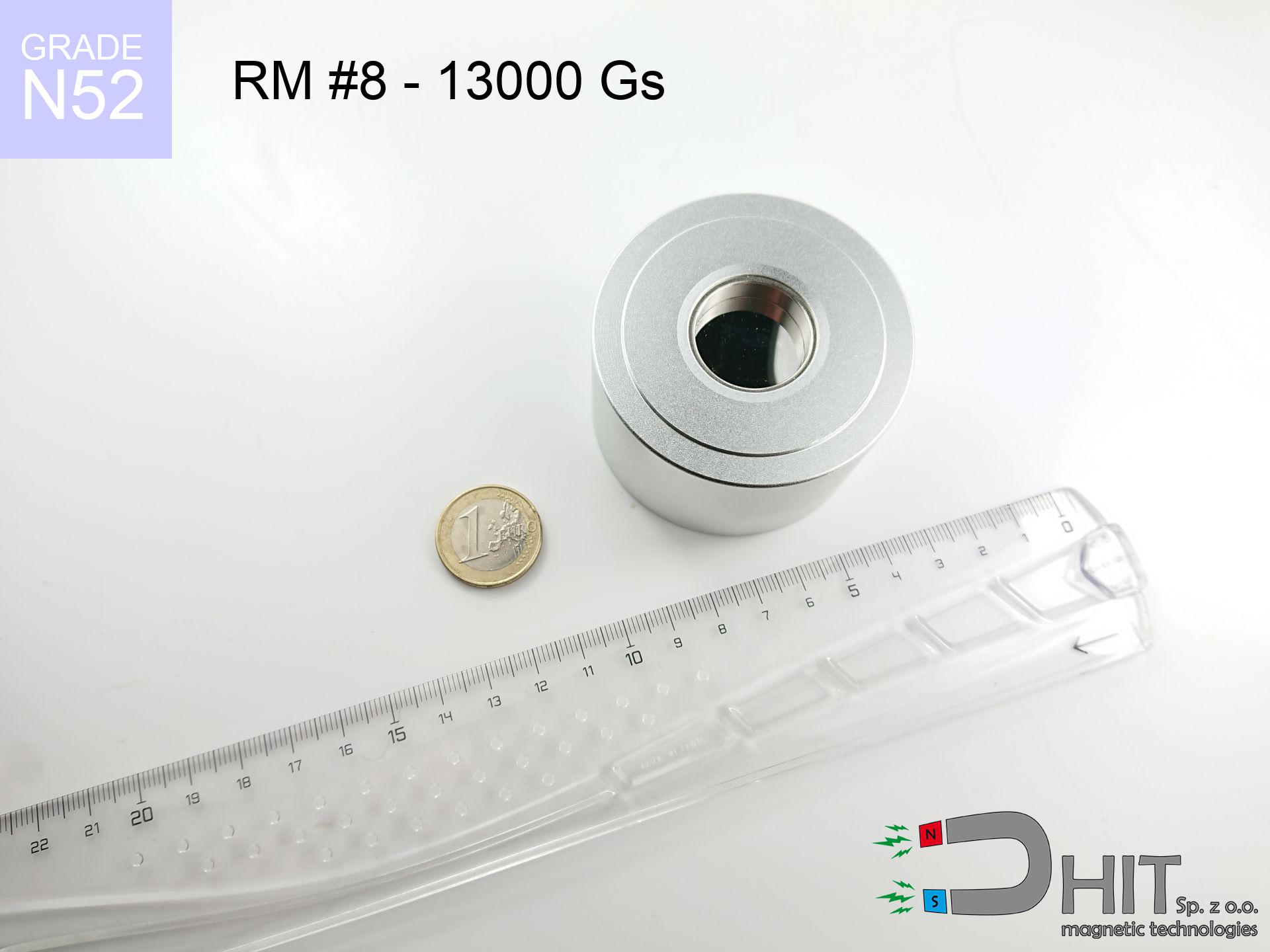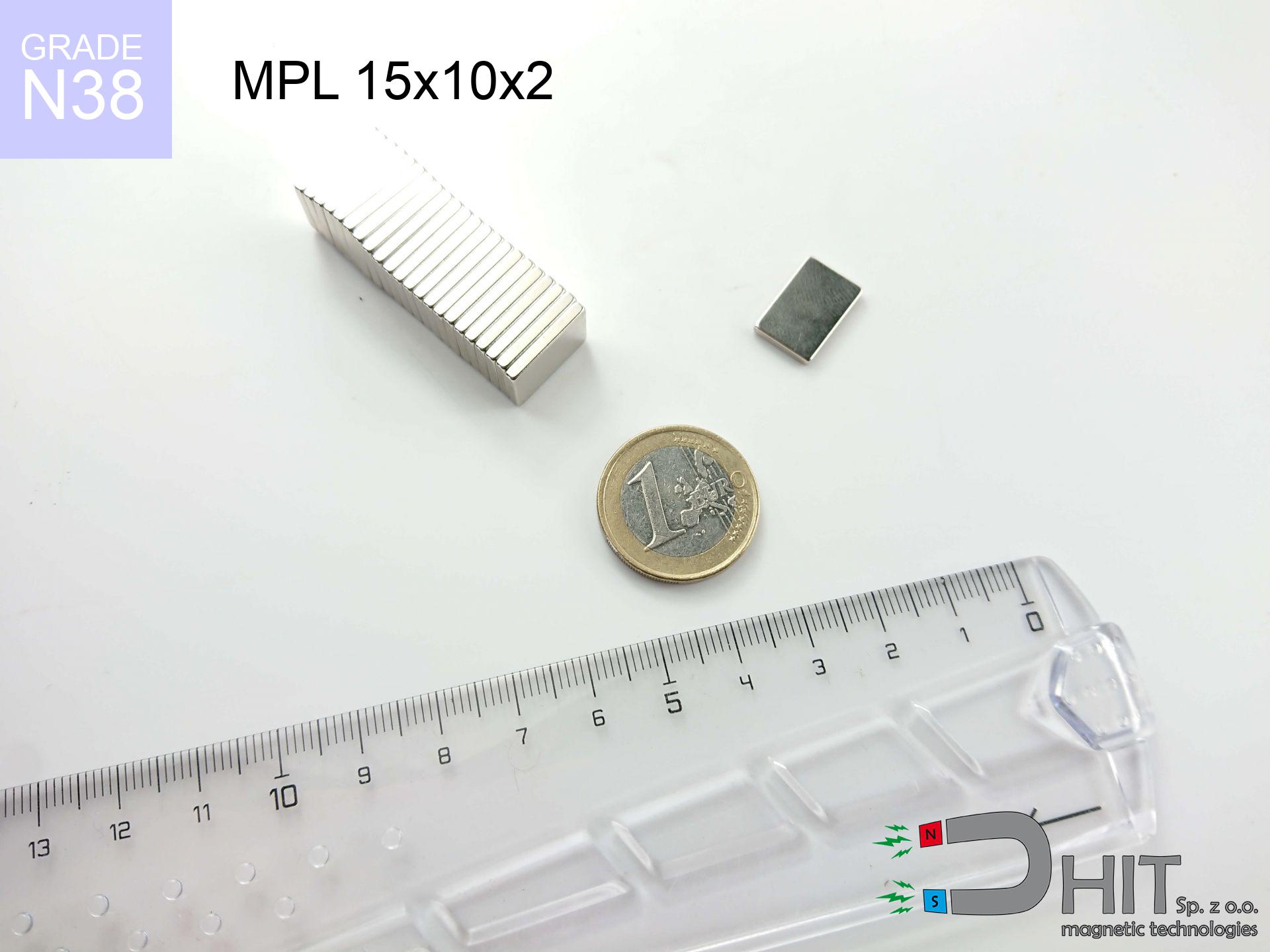RM R8 ULTRA - 13000 Gs / N52
magnetic distributor
catalog number 280400
GTIN: 5906301814498
magnetizing direction
↑ axial
max. temperature
≤ 80
°C
catalog number 280400
GTIN: 5906301814498
magnetizing direction
↑ axial
max. temperature
≤ 80 °C
200.00 ZŁ gross price (including VAT) / pcs +
162.60 ZŁ net price + 23% VAT / pcs
bulk discounts:
need more quantity?Want to bargain?
Give us a call tel: +48 888 99 98 98 or write via contact form on the contact page. You can check the power and the shape of neodymium magnets in our force calculator power calculator
Orders placed by 2:00 PM will be shipped on the same business day.
Specification: magnetic distributor R8 ULTRA - 13000 Gs / N52 ↑ axial
Magnetic properties of the material N52
Physical properties of sintered neodymium magnets Nd2Fe14B
Recommended articles for purchase
Advantages and disadvantages of neodymium magnets NdFeB.
Apart from immense strength, neodymium magnets have the following advantages:
- They do not lose power over time. After 10 years, their power decreases by only ~1% (theoretically),
- They are extremely resistant to demagnetization by external magnetic sources,
- Thanks to the shiny finish and nickel, gold, or silver coating, they have an aesthetic appearance,
- They have exceptionally high magnetic induction on the surface of the magnet,
- Thanks to their high temperature resistance, they can operate (depending on the form) even at temperatures up to 230°C and above...
- Thanks to the flexibility in shaping and the ability to adapt to specific requirements – neodymium magnets can be produced in various forms and dimensions, which expands the range of their possible uses.
- Significant importance in the industry of new technologies – are used in computer drives, electric motors, medical devices or various technologically advanced devices.
Disadvantages of neodymium magnets:
- They are fragile when subjected to a strong impact. If the magnets are exposed to impacts, we recommend using magnets in a protective case. The steel housing in the form of a holder protects the magnet from impacts, and at the same time increases its overall strength,
- High temperatures can reduce the power of neodymium magnets. Typically, after heating above 80°C, most of them experience a permanent reduction in strength (although it is dependent on the shape and size). To prevent this, we offer special magnets marked with the symbol [AH], which are highly resistant to high temperatures. They can operate even at temperatures up to 230°C, making them an ideal solution for applications requiring high-temperature operation,
- Due to their susceptibility to corrosion in a humid environment, we suggest using waterproof magnets made of rubber, plastic, or other moisture-resistant materials when using them outdoors,
- The use of a cover or a magnetic holder is recommended due to the limited possibilities of manufacturing threads or complex shapes in the magnet
- Potential hazard associated with microscopic parts of magnets can be dangerous, when accidentally ingested, which is particularly important in the aspect of protecting young children. Furthermore, miniscule components of these magnets have the potential to be problematic in medical diagnosis in case of swallowing.
Exercise Caution with Neodymium Magnets
Neodymium magnets are the strongest magnets ever invented. Their strength can shock you.
On our website, you can find information on how to use neodymium magnets. This will help you avoid injuries and prevent damage to the magnets.
Neodymium magnets are not recommended for people with pacemakers.
Neodymium magnets generate very strong magnetic fields that can interfere with the operation of a pacemaker. This is because many of these devices are equipped with a function that deactivates the device in a magnetic field.
Neodymium magnets are known for their fragility, which can cause them to become damaged.
Neodymium magnetic are delicate and will break if allowed to collide with each other, even from a distance of a few centimeters. Despite being made of metal as well as coated with a shiny nickel plating, they are not as hard as steel. In the case of a collision between two magnets, there can be a scattering of small sharp metal fragments in different directions. Protecting your eyes is essential.
Do not place neodymium magnets near a computer HDD, TV, and wallet.
Strong magnetic fields emitted by neodymium magnets can destroy magnetic storage media such as floppy disks, credit cards, magnetic ID cards, cassette tapes, video tapes, or other devices. In addition, they can damage televisions, VCRs, computer monitors, and CRT displays. Avoid placing neodymium magnets in close proximity to electronic devices.
Neodymium magnets can attract to each other, pinch the skin, and cause significant swellings.
If you have a finger between or alternatively on the path of attracting magnets, there may be a severe cut or even a fracture.
Avoid contact with neodymium magnets if you have a nickel allergy.
Studies clearly indicate a small percentage of people who suffer from metal allergies such as nickel. An allergic reaction often manifests as skin redness and rash. If you have a nickel allergy, you can try wearing gloves or simply avoid direct contact with nickel-plated neodymium magnets.
Magnets should not be treated as toys. Therefore, it is not recommended for children to have access to them.
Neodymium magnets are not toys. You cannot allow them to become toys for children. Small magnets pose a serious choking hazard or can attract to each other in the intestines. In such cases, the only solution is to undergo surgery to remove the magnets, and otherwise, it can even lead to death.
Neodymium magnets can become demagnetized at high temperatures.
Even though magnets have been found to maintain their efficacy up to temperatures of 80°C or 175°F, it's essential to consider that this threshold may fluctuate depending on the magnet's type, configuration, and intended usage.
Dust and powder from neodymium magnets are flammable.
Do not attempt to drill into neodymium magnets. Mechanical processing is also not recommended. Once crushed into fine powder or dust, this material becomes highly flammable.
Do not bring neodymium magnets close to GPS and smartphones.
Intense magnetic fields generated by neodymium magnets interfere with compasses and magnetometers used in navigation, as well as internal compasses of smartphones and GPS devices.
In order to illustrate why neodymium magnets are so dangerous, read the article - How dangerous are very powerful neodymium magnets?.



![magnetic beam 850x180x70 [4x M8] magnetic beam 850x180x70 [4x M8]](https://cdn3.dhit.pl/graphics/products/bm-850x180x70-4x-m8-mep.jpg)
![magnetic separator 25x300 [2xM8] / N52 magnetic separator 25x300 [2xM8] / N52](https://cdn3.dhit.pl/graphics/products/sm-25x300-2xm8-dij.jpg)
![magnetic accessories szekla [M10] magnetic accessories szekla [M10]](https://cdn3.dhit.pl/graphics/products/am-szekla-m10-zeh.jpg)

